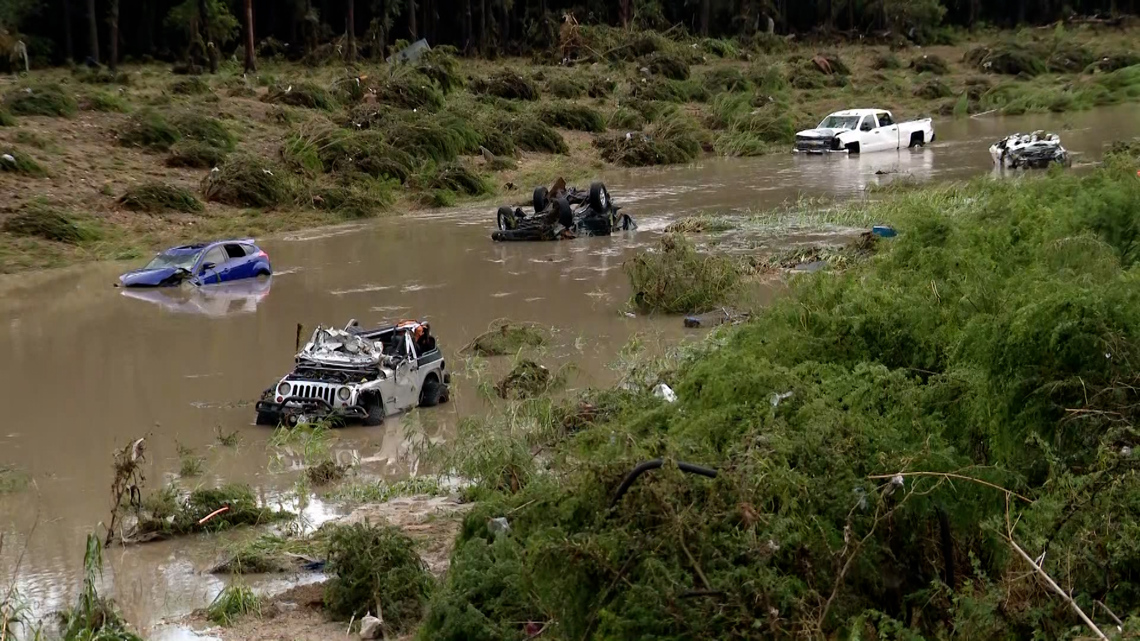
San Antonio leaders demand answers following deadly flooding as infrastructure concerns grow.
SAN ANTONIO — As San Antonio mourns the lives lost in this week’s deadly flooding, city and county leaders are demanding answers. Was it simply too much rain in too short a time—or are deeper issues with infrastructure and flood control to blame?
Officials say it’s still unclear whether the tragedy was solely the result of the storm or if something manmade failed.
“I have never seen the water like an ocean. The dumpster moved like a toy,” said Bexar County Commissioner Tommy Calvert, describing the force of the floodwaters. “I knew some bad things were likely to happen. I grew up in that area.”
15 vehicles were swept down Beitel Creek, near the access road of Loop 410 West and Perrin Beitel. Some were carried the length of seven football fields before coming to rest.
“Right now, they believe it was just a lot of rain in one part,” Calvert said.
In just three hours, the National Weather Service reports 5 to 7 inches of rain fell in the basin—an amount too great for most urban drainage systems to manage.
But San Antonio City Councilman Marc Whyte, who represents the area, said aging infrastructure likely played a role.
“Our city’s infrastructure is aging. It’s old already, but it’s getting worse,” Whyte said. “We’ve got broken pipes, we have streets that need repair, we have drainage issues. That’s where we need to be putting our money.”
Whyte added that 22% of the roads in the area are in poor or failing condition. He believes flood mitigation and road improvements need to become a top priority.
“If it’s something the city can do better, we’re certainly going to look into it,” Whyte added. “We are heart-struck by what happened and we’ll do everything we can to help the families in need.”
Calvert noted that the county had already invested $500 million into flood mitigation projects in the region since the 1998 flood, which had not resulted in loss of life—until now.
“From the flood of 1998, we hadn’t had any loss of life on all those flood control projects,” Calvert said. “That area had a flood control project the county had done.”
Still, Calvert said more analysis is needed. He raised concerns about overgrown vegetation, construction debris, and the replacement of green space with concrete—all of which he believes may have contributed to the tragedy and must be investigated.
“We have to consider, potentially with climate change, whether or not a 100-year flood plan is enough,” he said.
City officials say of the 141 monitored low-water crossings, at least 15 sites show potential structural damage following the storm. Crossings at Vicar Drive at Beitel Creek and Old O’Connor Road are among those with significant damage and will remain closed pending full assessments.
As the investigation continues, both city and county leaders say the goal is not just to understand what happened—but to ensure it doesn’t happen again.
